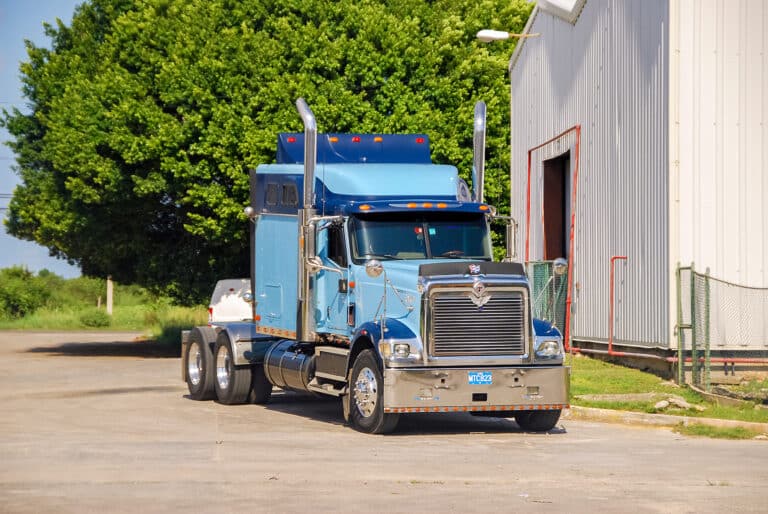Navigating the world of commercial driving requires more than just the ability to maneuver a vehicle; it also involves a detailed approach to logging hours of service (HOS) as required by the Department of Transportation (DOT). These DOT log books are indispensable for commercial vehicle drivers, documenting their driving, on-duty, off-duty, and resting periods over 24 hours. However, they are more than just a record-keeping exercise; they form the backbone of ensuring compliance with regulations designed to prevent fatigue and improve road safety for all.
The importance of maintaining accurate log books cannot be overstated, as errors or intentional falsifications can lead to serious consequences. These penalties range from fines to more severe measures like out-of-service orders, adversely affecting a carrier’s safety rating. Furthermore, mastering electronic logbooks can transform a regulatory burden into an invaluable asset for enhancing profitability and compliance. This article offers truckers a DOT log book recap on the current regulations and tips on how to improve compliance and avoid common mistakes. We will also discuss the future of ELDs and introduce a reliable electronic logging device: HOS247.
Do you have any questions? Talk to ELD Advisor: 650-405-3372 or Request Callback
ELD Federal Regulations
The transition from traditional paper log books to electronic logging devices (ELDs) marked a significant evolution in the trucking industry. This shift, driven by federal regulations and enforced by the Federal Motor Carrier Safety Administration (FMCSA), was aimed at enhancing the accuracy of HOS recording and simplifying compliance processes for commercial drivers and fleet operators.
The ELD Rule, part of the broader MAP-21 mandate, specifies that ELDs must be certified by the manufacturer and registered with FMCSA, and must meet specific technical standards to ensure the records of duty status (RODS) they generate are compliant. To be in compliance with FMCSA DOT logbook rules, a single log must be maintained for each driver and it must include:

1. Identification of the Driver and Carrier
- Full name of the driver.
- The carrier’s name and main office address.
2. Date and Total Miles
- The date of each duty period.
- Total miles driven each day.
3. 24-Hour Period
- Log books must account for all 24 hours in a day.
- Each page of the log book should represent a single 24-hour period.
4. Truck or Vehicle Information
- The truck or vehicle number or license plate.
- Identification of all motor vehicles (with their commercial vehicle identification numbers) in which the driver was in charge during the duty period.
5. Duty Status
- The driver’s duty status for each 24-hour period, including:
- Off-duty
- Sleeper berth
- Driving
- On-duty (not driving)
- The total hours spent in each duty status.
6. Graph Grid
- A graph grid illustrating the changes in duty status throughout the 24-hour period. This is a visual representation of the driver’s workday.
- ELDs automatically generate this graph, but it must also be accurately reflected in manual log books.
7. Remarks Section
- A remarks section where the driver notes any relevant information, including exemptions or exceptions utilized during the duty period.
8. Signature
- The driver’s signature to certify the accuracy of the log book entries for each 24-hour period.
9. Location
- The names of locations where duty status changes occur. For manual logs, this includes the city, town, or village, with the state abbreviation. ELDs might automatically record the approximate location.
10. Shipping Document
- Information related to the freight or cargo being transported, including the document number or shipper and commodity description, if applicable.
11. Record Retention
- Drivers are required to keep RODS for the current day and the previous seven days available for inspection.
- Carriers must retain driver logs and supporting documents for six months.
12. ELD Requirements
- If the driver is required to use an ELD, the device must be FMCSA-certified.
- ELDs must be able to transfer data during inspections using wireless web services or email.
- Drivers and carriers must be able to provide supporting documents for ELD records upon request.
Compliance with these requirements is crucial for avoiding penalties and ensuring the safety and well-being of drivers and the general public. It also helps to maintain operational integrity and reputation within the transportation and logistics industry.
HOS Regulations

Apart from the previously outlined ELD and logbook rules, drivers must also follow the federal and intrastate HOS regulations that govern their driving and on-duty limits. These HOS rules are designed to prevent fatigued driving and manage work-rest cycles for CMV operators.
Federal HOS Rules for Property-Carrying Drivers
The following outlines the key HOS rules that apply to property-carrying drivers across the US:
- 11-hour driving limit. Drivers can drive a maximum of 11 hours after 10 consecutive hours off duty.
- 14-hour on-duty limit. Drivers must not drive beyond the 14th consecutive hour after coming on duty, following 10 consecutive hours off duty.
- Rest breaks. Drivers must take a 30-minute break when they have driven for a period of 8 cumulative hours without at least a 30-minute interruption.
- 60/70-hour duty limit. Drivers cannot drive after accumulating 60/70 hours on duty in 7/8 consecutive days.
- Sleeper berth provision. Drivers may meet the 10-hour off-duty requirement by spending at least 8 hours in the sleeper berth and combining it with a separate 2-hour off-duty period.
Intrastate HOS rules may differ across states and operations, but they generally follow similar principles to prevent overly fatigued driving. Carriers and drivers operating only within a state’s boundaries should check for any intrastate-specific HOS variations.
Federal HOS Rules for Passenger-Carrying Drivers
The passenger-carrying HOS rules are generally more restrictive than those for property-carrying drivers. This accounts for the greater risks and responsibilities involved when transporting passengers versus freight.
- 10-hour driving limit. Drivers may drive a maximum of 10 hours after 8 consecutive hours off duty.
- 15-hour on-duty limit. Drivers are prohibited from driving after having been on duty for 15 hours, following 8 consecutive hours off duty.
- 60/70-hour duty limit. Drivers cannot drive after 60/70 hours on duty in 7/8 consecutive days.
- Sleeper berth provision. Drivers may meet the 8-hour off-duty requirement by spending at least 8 consecutive hours in the sleeper berth.
- No short-haul exceptions. Passenger carriers cannot take advantage of the 16-hour short-haul exception available to property-carrying CMVs.
Strategies for ELD Compliance
Understanding and adhering to the ELD mandate can seem overwhelming due to its complexity. However, non-compliance is not a viable option, given the severe consequences it entails. These include hefty fines, penalties, and a rise in Compliance, Safety, Accountability (CSA) scores, which can significantly impact a carrier’s operations. The repercussions of non-compliance go far beyond financial penalties, potentially leading to operational interruptions, damage to reputation, and loss of trust with key stakeholders. To ensure adherence to the ELD mandate, integrating the following key strategies into your daily operations is essential:
- Conduct regular ELD data reviews. Among the simplest yet most effective measures is the routine examination of data recorded by your electronic logbooks. This guarantees the accuracy and timeliness of your records. Any discrepancies or inaccuracies should be promptly addressed to uphold the integrity of your logs.
- Keep up with regulatory changes. FMCSA regulations are subject to change, with frequent amendments and updates. Being well-informed about these changes is critical. Engage with industry newsletters, participate in relevant webinars, and join forums to stay updated on compliance requirements.
- Educate your team. Compliance is a collective responsibility, not just that of the drivers. It’s crucial that all drivers and relevant staff are knowledgeable about ELD usage and the significance of precise logging. Conducting regular training sessions reinforces best practices and keeps everyone informed about regulatory updates.
- Implement a pre-trip checklist. Including ELD checks in your pre-trip checklist can prevent issues on the road. Verify that the device is functional and accurately logging data before departure to avoid compliance-related issues later.
- Promote open communication. Foster an environment where drivers can freely discuss issues or questions regarding their ELDs or logged hours. This open dialogue can surface potential compliance issues early, allowing for timely corrective measures.
- Leverage support features. Many ELDs offer additional compliance-assisting features, such as alerts for upcoming rest periods or approaching hourly limits. Familiarize yourself and your team with these tools to enhance both compliance and safety.
By incorporating these strategies into your operations, you establish a strong foundation for compliance, ensuring your readiness to meet regulatory demands efficiently and safely. Effective ELD compliance is rooted in understanding regulations, equipping your team with necessary tools and knowledge, and nurturing a culture of open communication and ongoing improvement.

Common Pitfalls to Avoid with ELDs
ELD providers and transportation industry experts regularly share insights and trends, pinpointing where users most often encounter problems. This collective wisdom helps us pinpoint the pitfalls that many encounter on their journey to compliance. Here are some of the most frequent missteps to watch out for:
- Ignoring minor malfunctions. Even minor issues with an electronic logging device can lead to inaccurate record-keeping if not addressed promptly. It’s essential to report and fix any ELD malfunctions immediately to ensure all driving time is accurately captured.
- Failing to retain records. Regulations require that elog records be retained for a specific period, typically six months. Not keeping these records for the required duration can result in penalties during audits or inspections.
- Inadequate driver training. Drivers who are not fully trained on how to use electronic logs effectively can inadvertently commit logging errors or fail to comply with HOS regulations. Continuous education and refresher courses can help prevent these issues.
- Overlooking manual inputs when necessary. While ELDs automate the logging process, there are situations where manual input is required, such as noting special driving categories or explaining discrepancies. Failing to make these manual entries when needed can lead to compliance issues.
- Mismanaging unassigned driving time. Electronic logging systems sometimes record driving time that can’t be assigned to a specific driver. Fleet managers must regularly check for and correctly assign this unassigned driving time to avoid inaccuracies in records.
- Neglecting to perform regular audits of ELD data. Regular self-audits can help identify potential compliance issues before they become significant problems. These audits should include checking for accuracy in log entries, ensuring all required information is correctly recorded, and verifying that all drivers are using the elogs as intended.
- Assuming all ELDs are the same. Not all ELDs offer the same features, levels of user-friendliness, or reliability. Choosing a solution that doesn’t fit your specific operations can lead to compliance challenges. It’s important to select a device that meets both the FMCSA’s requirements and your operational needs.
- Underestimating the importance of supporting documents. In addition to ELD app records, drivers are required to keep supporting documents for each 24-hour period that can verify their RODS. Neglecting the importance of these documents can make it difficult to verify the accuracy of log data during an audit or inspection.
We hope that this DOT log book recap has been helpful. By being aware of and actively avoiding these common mistakes, fleet operators and drivers can significantly reduce the risk of non-compliance, contributing to smoother operations and avoiding the costly penalties associated with ELD mandate violations.
Advantages of ELDs for Truckers
While navigating the complexities of ELD compliance can be daunting, there’s a silver lining. By leveraging the capabilities of electronic logbooks, operations can not only meet regulatory requirements but also unlock potential for greater productivity and profitability. Below, we’ll explore how ELDs can be transformed from a compliance necessity into a tool that enhances operational efficiency and opens up new opportunities for truckers. Here are some key benefits of elogs for truckers:
- Improved accuracy and compliance. Electronic logbooks automatically record driving time and other duty statuses, significantly reducing the likelihood of errors associated with manual log keeping. This automation helps ensure compliance with HOS regulations, reducing the risk of violations and associated fines.
- Enhanced safety. By enforcing compliance with HOS regulations, elogs contribute to reducing driver fatigue, one of the leading causes of road accidents in the trucking industry. They make it easier for drivers to adhere to prescribed rest periods, thereby enhancing road safety for everyone.
- Time savings. ELDs eliminate the need for manual record-keeping, saving drivers time that can be better spent on rest or driving. The automation of logs also speeds up the inspection process during roadside checks, allowing drivers to get back on the road more quickly.
- Reduction in paperwork. With electronic logs, the hassle of managing and storing paper logbooks is eliminated. Digital logs are easier to manage, store, and retrieve, making it simpler for drivers and carriers to maintain accurate records and comply with retention requirements.
- Improved fleet management and efficiency. For fleet operators, ELDs offer real-time access to data on vehicle location, fuel consumption, and driver behavior. This information can be used to optimize routes, improve fuel efficiency, and manage fleet operations more effectively.
The Future of ELDs and RODS: Trends and Expectations

As technology continues to advance, the future of ELDs and RODS looks promising, with several trends expected to shape the evolution of these digital tools:
Enhanced Integration with Other Technologies
ELDs are likely to become more integrated with other in-cab technologies, such as advanced driver assistance systems (ADAS) and telematics solutions. This integration can provide a more holistic view of vehicle operation, further enhancing safety and efficiency.
Increased Use of Data Analytics
With the vast amount of data collected by ELDs, there’s a growing opportunity to use analytics for predictive maintenance, driver performance monitoring, and operational optimization. This could lead to better decision-making and increased profitability for carriers.
More User-Friendly Interfaces
As ELD providers seek to differentiate their offerings, there will be a focus on developing more intuitive and user-friendly interfaces. This will make it easier for drivers to interact with ELDs, potentially improving compliance and satisfaction.
Expansion of ELD Mandates Globally
Following the United States’ lead, other countries may adopt similar ELD mandates. This global trend could streamline international logistics and transport operations, making it easier for carriers to comply with varying regulations.
Advancements in Security and Privacy
As ELDs become more central to trucking operations, enhancing the security and privacy of the data they collect will be paramount. Expect to see more sophisticated cybersecurity measures being implemented to protect sensitive information.
ELDs have already begun transforming the trucking and transportation industry by improving compliance, safety, and operational efficiency. As we look to the future, advancements in technology and regulatory trends are expected to further enhance the benefits of ELDs and RODS, shaping a safer, more efficient, and data-driven industry.
HOS247 Electronic Logbooks

In the trucking and transportation industry, finding a practical and reliable electronic logging solution is essential. HOS247 stands out with its focus on features that simplify compliance, improve operational efficiency, and make the driving experience better. Here are the main reasons HOS247’s electronic logbooks are a top choice for drivers and fleet managers:
- User-friendly interface. HOS247 prioritizes simplicity and accessibility in its design, creating an intuitive dashboard that quickly shows drivers their remaining hours, duty status changes, and more. This approach reduces the learning curve and allows drivers to concentrate on driving rather than paperwork.
- Real-time duty status updates. HOS247 provides immediate updates on drivers’ duty statuses and remaining driving hours, aiding in compliance with HOS regulations and avoiding potential penalties for violations.
- Multilingual support. Recognizing the diverse backgrounds of truckers, HOS247 offers its electronic logbook in multiple languages, enhancing accessibility and comprehension for non-English speakers.
- Reliable hardware. HOS247’s hardware is built to endure the challenges of the road, ensuring drivers have consistent access to their logbooks and safeguarding against data loss due to hardware malfunction.
- Software integration. Beyond logging, HOS247 integrates with GPS tracking and freight visibility platforms like MacroPoint and Project44. These features offer fleet managers real-time vehicle location data, enable efficient route planning, improve delivery time estimates, and facilitate better communication within the logistics ecosystem.
By merging a straightforward interface with up-to-the-minute updates, support for multiple languages, dependable hardware, and robust integrations, HOS247 is tailored to meet the evolving needs of today’s truckers and fleet managers, streamlining compliance, and enhancing operational efficiency.

As an expert in B2B and B2C sales, I’ve dedicated myself to perfecting sales processes and client retention strategies in the logistics and trucking industry. I have significantly contributed to the expansion of the ELD service, catering to retail and wholesale clients in need of HOS247 ELD solutions. My unwavering commitment to implementing state-of-the-art sales techniques and technologies ensures the continuous growth and success of businesses I work with.












A truck daily log book is used to record duty statuses of commercial drivers to ensure compliance with hours of service rules and regulations. There are two types of logbooks: Paper logs. The driver must fill them out manually and

Since the Department of Transportation’s ELD mandate came into effect, drivers of commercial vehicles have been required to use electronic logging devices to record hours of service. Choosing dependable DOT electronic log books can help carriers prevent ELD and HOS

In today’s fast-paced business world, managing a commercial fleet can be challenging, but it doesn’t have to be. With the help of fleet management systems, carriers can enjoy various benefits, such as reducing fuel costs, enhancing driver safety, providing better